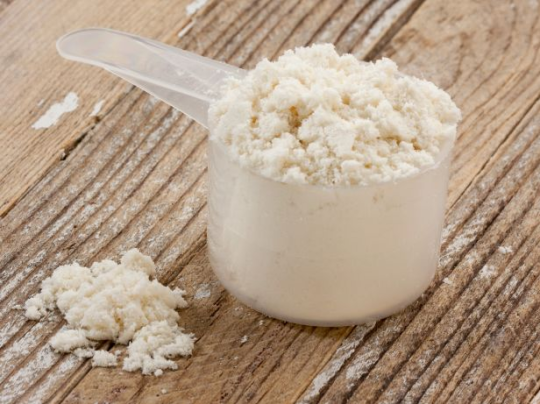The (New) Science Behind Protein Intake

As a sports dietitian, I am often asked by athletes and exercise enthusiasts, “How much protein do I need?” But simply suggesting a daily total number of grams of protein per day is not enough. Plus, it’s hard to make sense of the all the conflicting info out there on protein intake and muscle protein synthesis (aka muscle building).
At the recent Food and Nutrition Conference and Expo in Nashville, Blake Rasmussen, Ph.D., from the University of Texas discussed some of the latest science on protein. Here is some insight on how much protein you should be eating, which foods are best, and guidelines for when to eat them.
Calculating Needs
Daily protein needs can vary significantly based on age, gender and activity level, but typically ranges from 55 to 100 grams per day for a 150-pound person.
While the Dietary Guidelines currently recommend 0.8 grams per kilogram of body weight (about 0.36 grams per pound), new research suggests that body requirements are higher, especially for active folks and older adults.
A study recently published in the American Journal of Clinical Nutrition indicates that in addition to a boost in daily grams, the proper type and timing of protein-rich foods are also vital for keeping muscles healthy.
Types of Protein
Protein quality comes down to which amino acids it contains. There are 20 of these protein building blocks, and some foods contain more of them than others. Nine of these 20 are dubbed “essential,” meaning they must come from our daily diet.
Grams of protein are plentiful in both animal- and plant-based foods, but options like meat, dairy, eggs, fish, soy and quinoa have the advantage of containing all nine of those sought-after amino acids. Legumes and grains offer lots of nutrients but are lacking one or more of those essential amino acids.
For best results, consume a combination of animal and plant options to bank those amino acids and round out your other nutritional needs. Some studies also suggest that whey and casein protein found in dairy, as well as the soy-based proteins, may be helpful when consumed together to optimize muscle building, especially after activity.
Related: 11 Healthy-Eating Myths That Just Aren’t True
When
According to published literature, protein intake should ideally be spread throughout the entire day, not consumed in a huge dose at one or two meals.
Muscle protein synthesis functions at a higher rate in the 24-hour period following exercise. This means that those who are physically active will see the greatest benefit for building and maintaining lean body mass if they eat protein after a workout.
Sample Meal Plan
What does a healthy day with well-distributed protein look like? Take a look:
Breakfast
Omelet (1 egg + 1 egg white)
1 cup cooked oatmeal (made with low-fat milk and topped with berries)
Total protein = 23 grams
Snack
Nonfat flavored Greek yogurt
Total protein = 13 grams
Lunch
Turkey sandwich on whole-grain bread
Total protein = 29 grams
Snack
Apple
2 tablespoons natural peanut butter
Total protein = 7 grams
Dinner
4 ounces cooked chicken breast
1 medium baked sweet potato
Garden salad with balsamic vinaigrette
Total protein = 33 grams
Daily total calories = 1,800
Daily total protein = 105 grams
More from Food Network:
12 Foods Nutritionists Say They Won’t Eat
These Foods Help to Prevent Cancer
Healthy Carbs You Should Be Eating
Dana Angelo White, MS, RD, ATC, is a registered dietitian, certified athletic trainer and owner of Dana White Nutrition, Inc., which specializes in culinary and sports nutrition.
